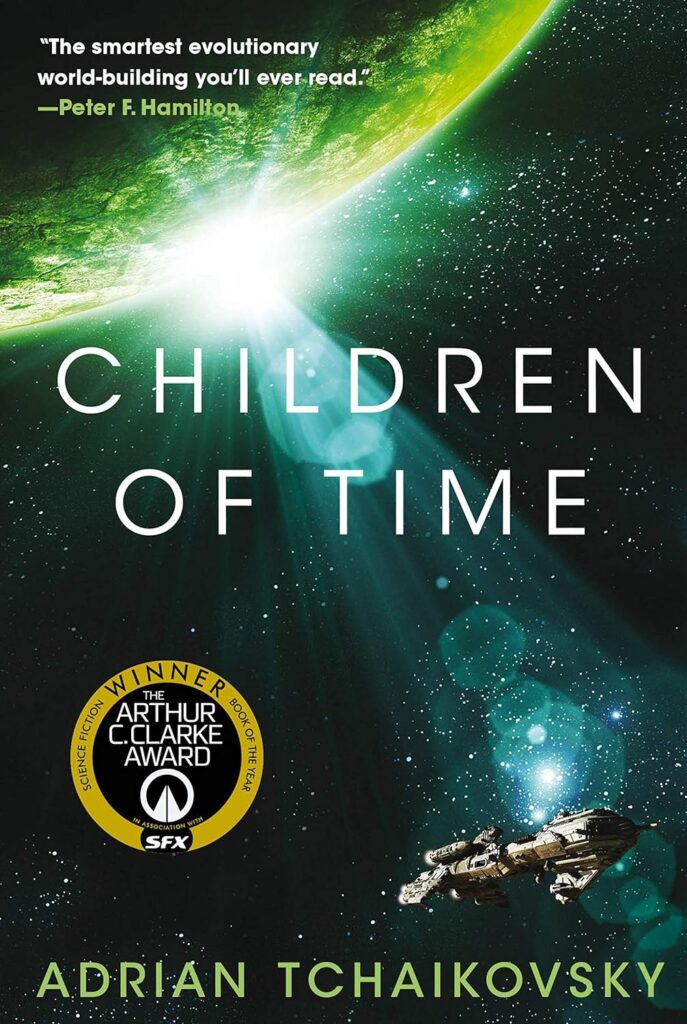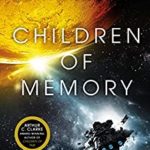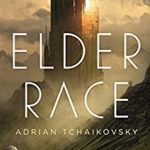
I needed to re-read Children of Time by Adrian Tchaikovsky because I was tone-deaf years ago to what the author was doing when I first opened this novel. Yeah, I was a bit turned off by characters who were spiders but more so by the narrative voice of those sections describing their evolution. There was a kind of omniscient narrator who was explaining everything. I could only compare it unfavorably to Vernor Vinge’s classics, A Fire Upon the Deep and A Deepness in the Sky, which took a very different approach to introducing non-human characters. But this time, especially after reading Children of Memory, I gave up on comparisons (which are never helpful for me) and could take the Children of Time on its own terms. And I was blown away.
To be sure, there were elements of the narrative and the story resolution that took away from the overall experience, but Tchaikovsky does so much so brilliantly in this novel that I could enjoy the story from beginning to end. It takes on great themes of communication, evolution, human god-complexes and the urge to dominate or destroy the other, and puts it all together in an exciting novel. One of the great achievements of Children of Time, for me, is the way it takes a story spanning many thousands of years and makes it feel intimately present.
Children of Time opens with Dr. Avrana Kern, supremely satisfied with her own genius, as she is about to launch an orbiting satellite around a terraformed planet and release a group of primates onto its surface. The planet, which she calls Kern’s World, has been seeded with a nano-virus intended to infect benignly her monkey colonists. The idea is that they will gradually evolve to a high level of intelligence and learn how to communicate with the human in orbit. Then that person will help them advance to new levels of scientific achievement. The plan goes wrong when the man scheduled to occupy the satellite turns out to belong to a sect bitterly opposed to transgressing human limitations. He blows up the spaceship and the load of primates. Kern escapes into the capsule of the satellite and successfully achieves orbit.
The story shifts some millennia ahead (at least in spider terms) to introduce us to Portia, a nine-millimeter spider who has developed primate level sight and the beginnings of a higher order of pattern recognition. She recognizes the concept of ally in encountering a male of her species, and the two become excellent hunting partners. The narrator lets us know that the nano-virus has infected them both and their descendants will grow larger and more skillful until they come to dominate this world.
Then we are in the far future when a human generation spaceship, the Gilgamesh, is approaching Kern’s World in its search for a new home for humanity. It contains the last few hundred thousand members of the human race who have fled their destroyed planet. The ship starts receiving a message, and that prompts the awakening from cold-sleep of the commander, Guyen, the chief engineer, Isa Lain and the classicist (expert in ancient languages), Mason Holsten. Holsten realizes it is a distress signal, indicating the presence of high-tech equipment. That is good enough for the commander, who prepares the ship for deceleration to the terraformed planet, though all knowledge of Kern’s experiment has been lost after many millennia.
In the meantime, Portia and her kind have evolved into meter-sized arachnids of formidable intelligence and planning capabilities. Portia has stolen a crystal from an ant colony (which has also been influenced by the nano-virus), and this enables the spiders to receive signals from the Messenger in the sky, the satellite they have been observing for years. They learn to interpret these signals as mathematical language and come to revere the Messenger as their god. These are some of the most interesting passages in Children of Time, detailing how the spiders communicate through their webs and how their thinking comes to include something spiritual:
“Here is an expansive tent of silk whose walls are woven with complex geometric patterns, the crossing threads drawn out according to an exacting plan. Another handful of her kind are already there, seeking the reassurance of the numinous, the certainty that there is something more to the world than their senses can readily grasp; that there is a greater Understanding. That, even when all is lost, all need not be lost.
Children of Time, Kindle edition, Page 132
…Portia crouches down with them and begins to spin, forming knots of thread that make a language out of numbers, a holy text that is written anew whenever one of her people kneels in contemplation, and that is then consumed when they arise.”
What follows is a series of adventures, as the spiders expand their civilization over their planet, develop new technologies for sophisticated communication as well as weapons that help them win over their enemies to become new allies. Meanwhile, this progress is contrasted by the regressive behavior of Guyen and civilians he has awakened to serve him over centuries. Holsten and Lain get glimpses of his transformation in periods of arousal from cold-sleep. Guyen turns himself into the God of a cult, a new generation born on shipboard, and tries to live forever with mechanical aids. Inevitably, humans and spiders clash in a conflict one side views as war, the other as a much different opportunity.
So much of the story depends on communication, the different uses of power, the nature of evolution and the transformation of intelligence through human intervention. The idea of the nano-virus is never explained very well, but the influence it has on spiders and other species of Kern’s World is brilliantly realized. I was bothered by the omniscient narrative voice early on, but as soon as the novel switches to the points of view of successive generations of spiders, it becomes much more convincing.
The use of a handful of names for spider lineages of varying individuals creates a sense of unity among their experiences as we focus on the few leaders, especially Portia, Bianca and Fabian, who gradually develop the skills and knowledge of a new civilization. That simple device of using the same names solves what often feels like disjointed scenes in stories covering thousands of years where individuals come and go, giving a reader little chance to identify with anyone. Among the human crew of the Gilgamesh, the gradually evolving relationship between the ultra-competent engineer, Lain, and the translator Holsten, who has a hard time recognizing closeness, ultimately becomes quite moving as we see them roused from cold-sleep over millennia and gradually sensing how much they need each other.
Children of Time manages to be at once an exciting adventure, a finely realized portrait of evolving intelligence, and a reflection on communication, conflict and the human need to understand the universe. If spiders or anything else has put you off reading this in the past, forget that and go for it.





Good book. One thing I never understood is the use of uplifted apes in the first place. Why not just use human colonists.
It fits with the urge to be a god – the scientist wants the uplifted beings to know that they owe everything to her and come to worship her, as the spiders actually do, for a time.